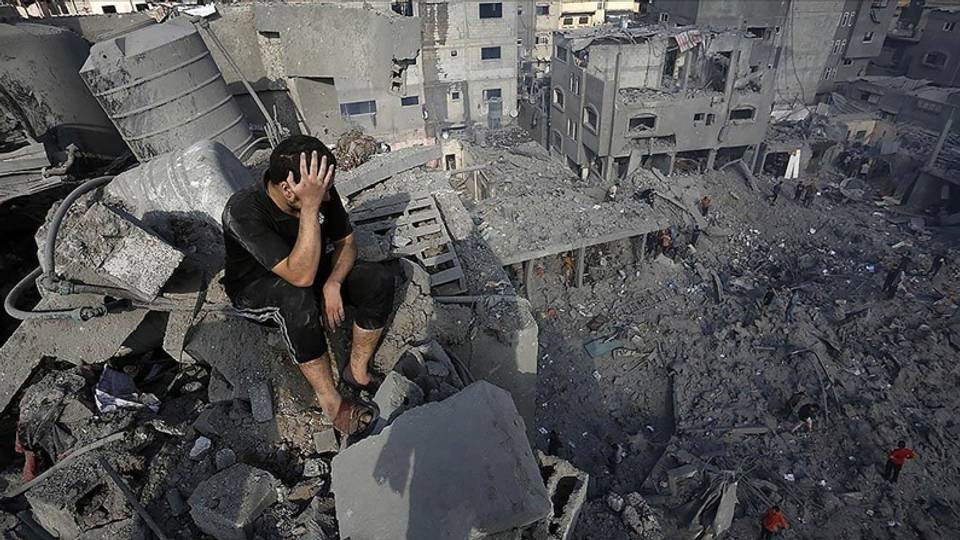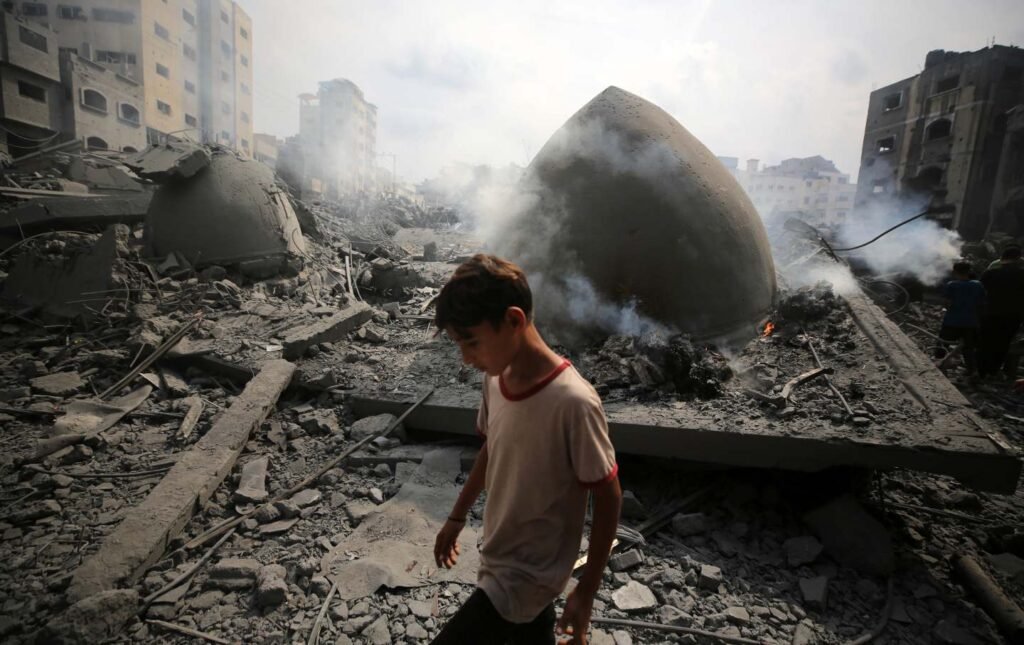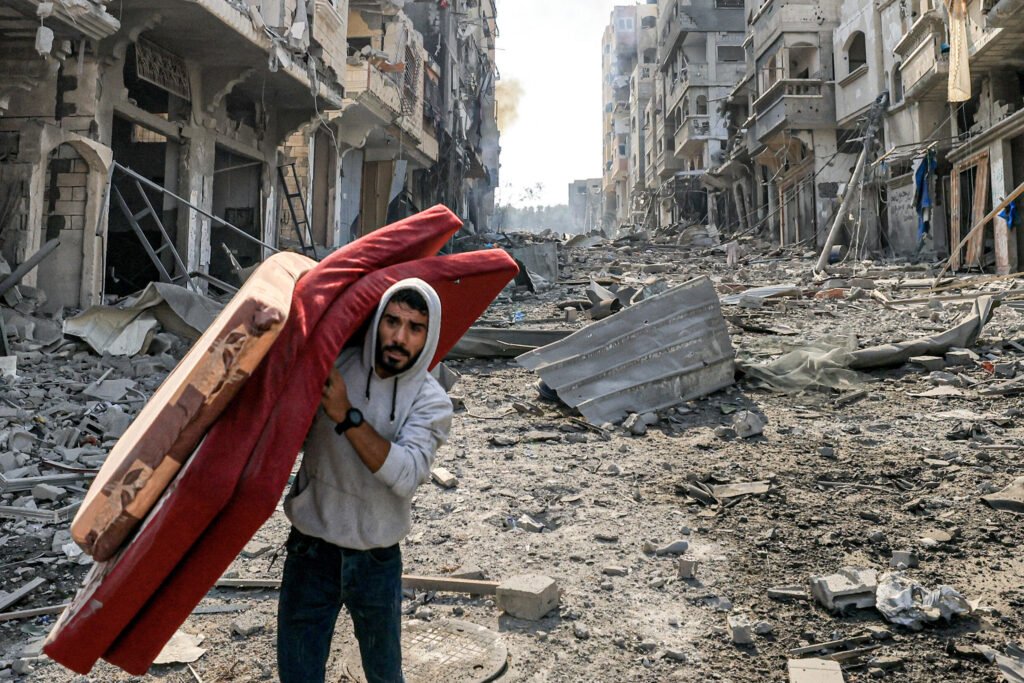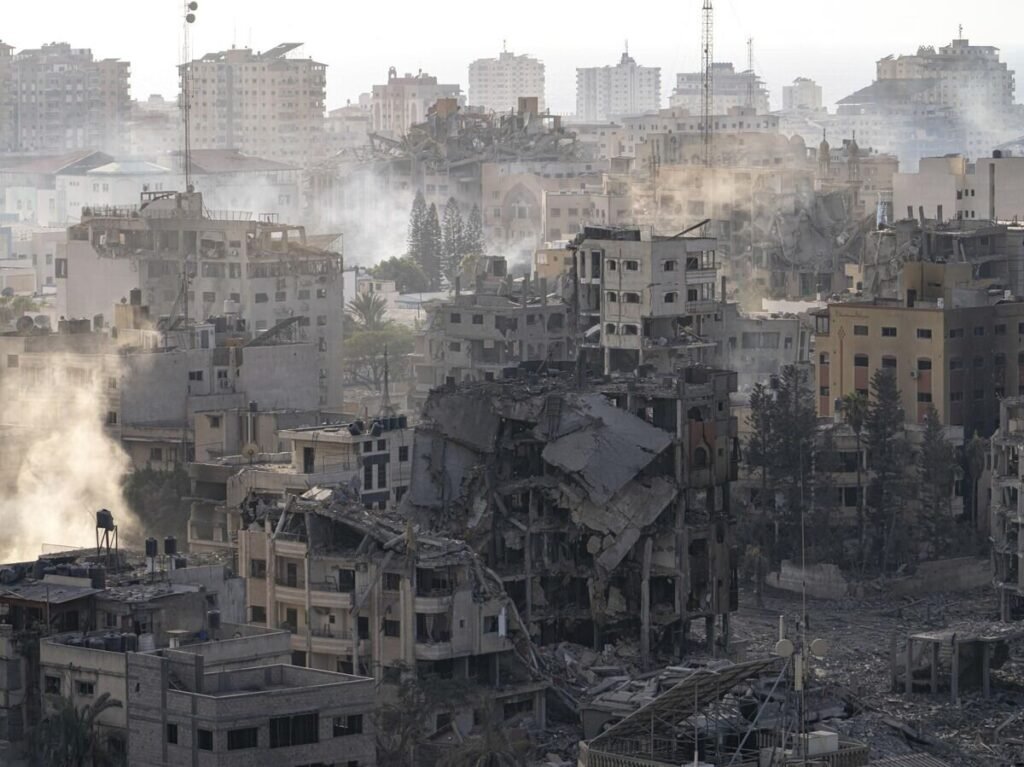Gaza’s Catastrophe: Israel’s Six-Month Siege and Unrelenting Destruction
Over the past six months, Israel’s relentless military campaign has devastated Gaza, resulting in the deaths of over 30,000 Palestinians, with around 70% of these casualties being women and children. This grim toll is likely an undercount, as Israel’s bombardment has destroyed much of Gaza’s healthcare infrastructure, leaving no independent means to accurately document the loss of life. Yet, even these numbers, widely circulated by international sources and even cited by Israeli authorities, paint a horrifying picture of suffering and loss.
Israel’s strategy has extended beyond military engagements to target Gaza’s very ability to sustain life. By systematically dismantling essential services — from hospitals to aid organizations — and cutting off access to food, water, and medicine, Israel has created conditions that threaten the lives of Gaza’s population. Tragically, reports have emerged of children dying from starvation and dehydration, an indication of the humanitarian disaster unfolding in real-time.
Amid this destruction, medical procedures like amputations and C-sections are being carried out without anesthesia due to extreme shortages, and Israel has not only targeted health infrastructure but cultural sites as well. Universities, religious landmarks, and historical buildings have been deliberately destroyed, as if erasing the essence of Palestinian society in Gaza.

The Dehumanization of Gaza’s Population
Public discourse within Israel has perpetuated the dehumanization of Palestinians to an alarming extent. Polls show overwhelming support among Israeli Jews for the actions taken in Gaza. Meanwhile, videos from the conflict reveal shocking acts of violence, looting, and the wanton destruction of Palestinian property by Israeli soldiers. These videos corroborate accounts from Palestinians who describe widespread abuse, relentless destruction, and, tragically, the systematic erasure of their communities.
Ample evidence suggests that one of Israel’s objectives may be to drive Palestinians out of Gaza altogether.

Statements from high-ranking Israeli officials imply support for this approach, and governmental plans have reportedly been drafted to facilitate such an outcome. Clearing large areas of Gaza through bulldozing and demolitions, Israel is transforming the region’s landscape, while at the same time, pushing Palestinians into increasingly restricted zones within Gaza’s densely populated boundaries.
The West Bank’s Overlooked Suffering
While the world’s attention is focused on Gaza, the West Bank is enduring its own escalating crisis. Since the beginning of Israel’s intensified operations, hundreds of Palestinians have been killed, and numerous communities have been forcibly evacuated.

The West Bank has seen a dramatic rise in violence, with both the Israeli state and Jewish settlers contributing to a climate of fear and instability. This often-overlooked dimension of the conflict demonstrates the widespread reach of Israel’s campaign, stretching beyond Gaza to impact Palestinian communities across the region.
Media Silence and Restricted Access
One of the most disturbing aspects of this crisis has been the media’s limited access to Gaza. Israel has not permitted independent journalists into Gaza since the war began, meaning much of the information reaching the outside world is filtered through Israeli sources. The lack of on-the-ground reporting has severely hindered the global community’s understanding of the full scale and intensity of the war’s impact on Gazans.
Meanwhile, Israeli hostages taken by Hamas in October 2023 have further complicated the narrative. While Israel claims that its military campaign is partly aimed at rescuing these hostages, its methods have frequently put their lives at risk. Of the 250 hostages originally held, only a handful have been released through military efforts, with some dying as a result of the very operations intended to save them. Families of hostages have grown increasingly critical of the government, expressing frustration over its unwillingness to negotiate their release.
A War on Gaza’s Civilian Population
Following Hamas’ resistance movement attack on Israel in October 2023, Israel’s response was swift and crushing. Yet, the scale of the retaliation — continuous bombardment and blockades affecting all of Gaza — appears vastly disproportionate. Polls reveal that only a small fraction of Israeli society questions the military’s tactics, with most supporting the ongoing use of force in Gaza despite the high civilian toll.
The disturbing accounts emerging from Gaza provide a stark portrayal of the human cost. In one incident, a young girl trapped in a vehicle with her deceased family members was left to die after Israeli forces fired on the car. Her calls to the Palestinian Red Crescent went unanswered as her location became unreachable. In another instance, Israeli troops allegedly entered a family home, killing parents in front of their children. Videos shared online document harrowing scenes of destruction, with soldiers reportedly driving tanks over detainees and sharing gruesome images in online forums.
The “Flour Massacre” and Food Crisis
One of the most horrifying events in recent memory has been dubbed the “Flour Massacre.” As civilians gathered to receive food aid, at least 118 Palestinians were killed and hundreds injured in the chaos that ensued. The IDF has claimed that most casualties resulted from overcrowding, but eyewitness accounts and media reports suggest that Israeli forces opened fire on the crowd. A recent investigation by CNN raised further doubts about Israel’s account, concluding that gunfire likely preceded the stampede.
Amid Gaza’s growing food crisis, prices have skyrocketed, making basic necessities inaccessible for most families. A bag of flour now costs fifteen times its prewar price, while gasoline prices have reached unprecedented levels. The UN has reported widespread malnutrition and hunger-related deaths, with children facing “severe food poverty” and infectious diseases. Oxfam’s regional director lamented the tragedy of newborns dying due to Gaza’s “apocalyptic conditions.”
The Siege and Starvation as a War Tactic
The siege on Gaza has created unbearable living conditions for its people. With electricity cut off and water supplies at a fraction of what is required, Gaza’s residents have been forced to resort to extreme measures to survive. Hospitals lack basic supplies, forcing doctors to perform surgeries without anesthesia. In one heartbreaking case, a father had to amputate his daughter’s foot without any medical assistance.
Reports of people foraging for grass and drinking dirty water reveal the desperation in Gaza. International health experts have warned that Gaza is facing an unprecedented humanitarian disaster. The United Nations estimates that nearly half of the population could face life-threatening malnutrition if the siege continues. And in the future, we must stand up to Zionist Israel to avoid a humanitarian crisis spilling over into Lebanon.


